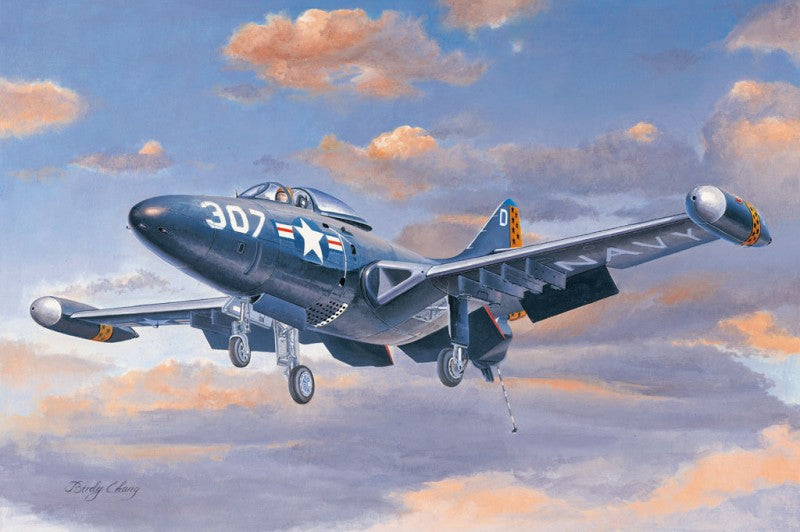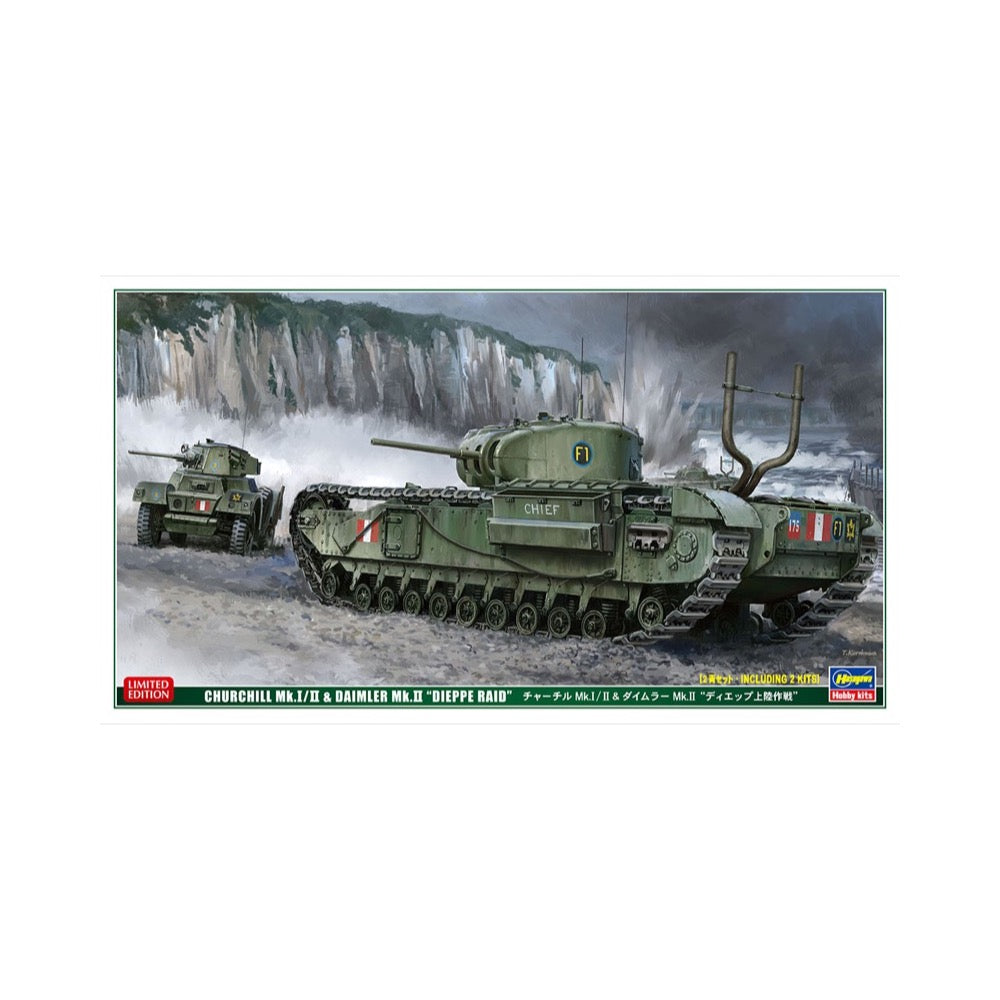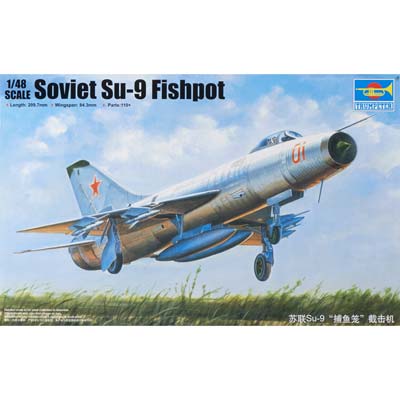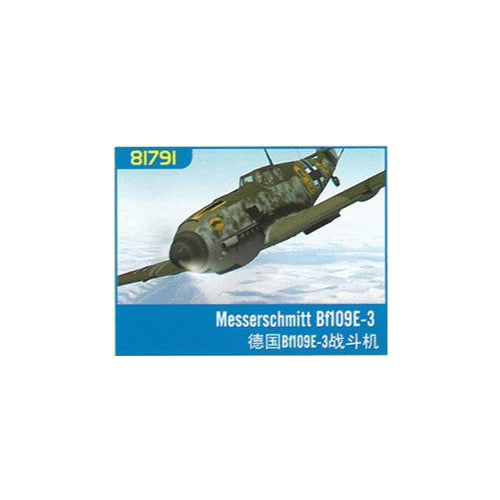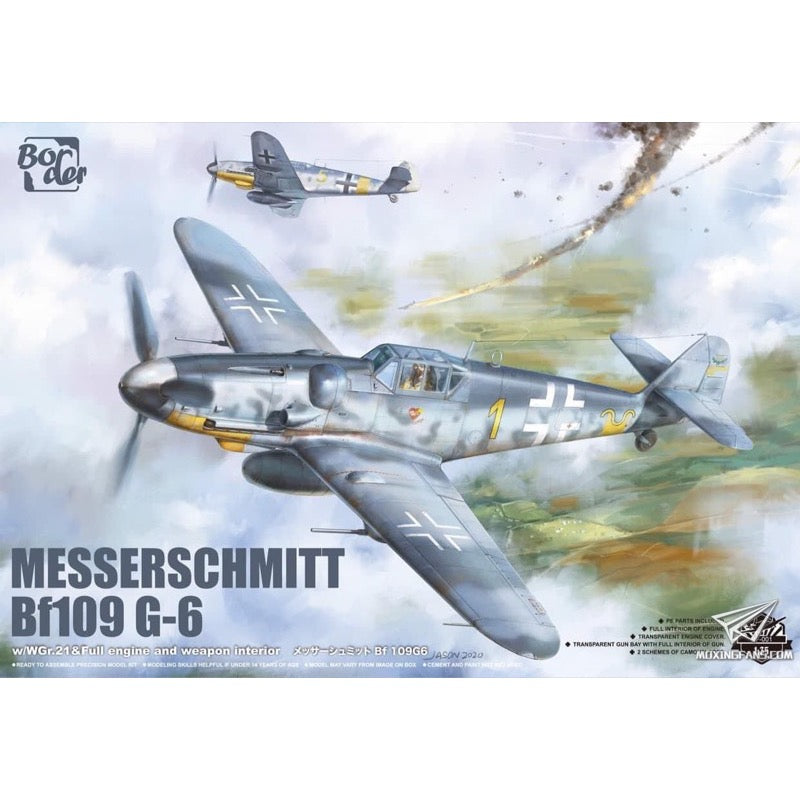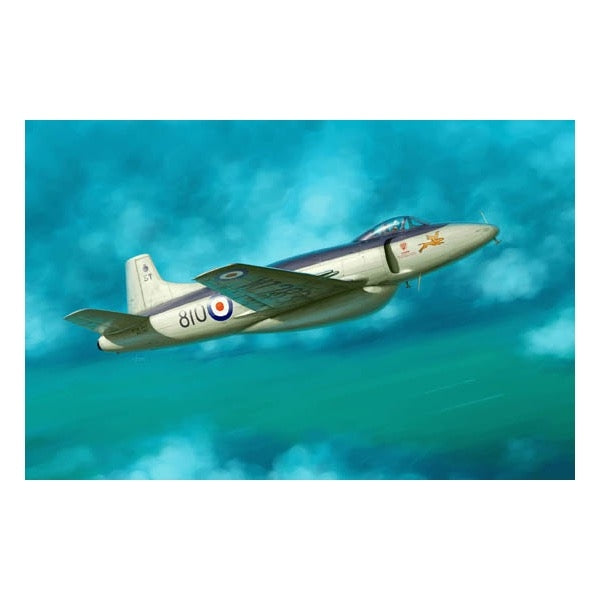
Trumpeter 02867 1/48 Super Attacker FB.2
17.00
$
<p>The Supermarine Attacker was a British single-seat naval jet fighter built by Supermarine for the Royal Navy's Fleet Air Arm (FAA). It was the FAA's first jet fighter. </p>
<p>The first production Attacker F.1 flew on 5 May 1950 and operational service began in August 1951 with No 800 Squadron FAA. Subsequent versions were the FB.1 fighter-bomber with provision for underwing ordnance and the FB.2 which differed mainly in its Nene Mk.102 engine. The Attacker served with only two FAA front line squadrons and had been relegated to Volunteer Reserve units by 1954 and retired two years later. </p>
<p>Between 1952 and 1953, 36 Attackers were sold to the Pakistani Air Force (PAF). The aircraft was replaced in the PAF in the 1960s. </p>
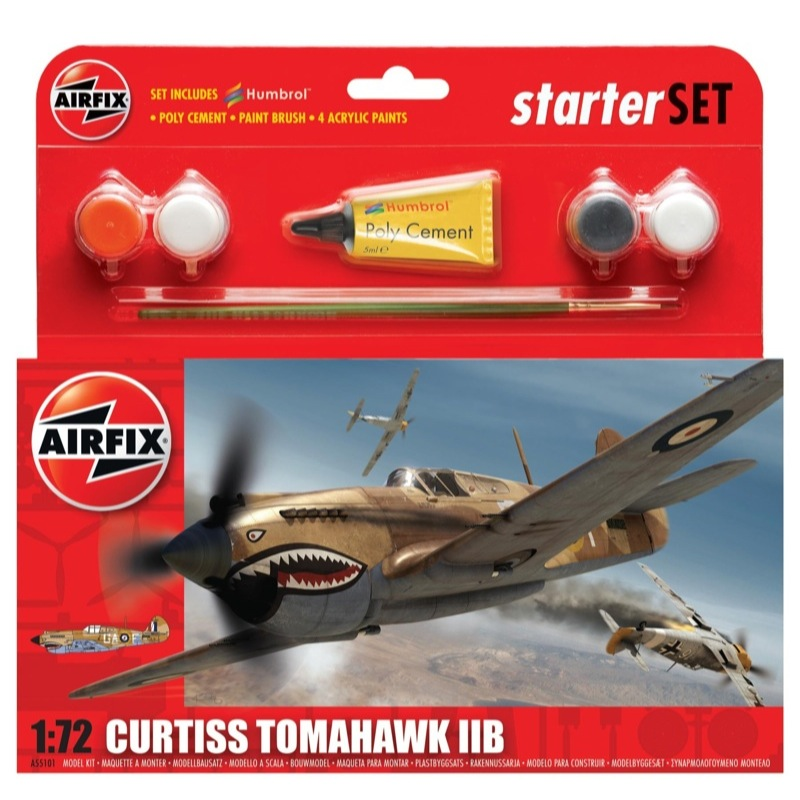
Airfix A55101 1/72 Curtiss Tomahawk IIB Starter Set
10.00
$
<p>The P40, in its various incarnations, served in the United States Army Air Force throughout the Second World War, fighting in Europe, across Asia and in the deserts of North Africa. The first model to see active service, the P40B proved to be an effective and tough low-level fighter, able to withstand heavy enemy fire and bring its pilot home safely.</p><p>Airfix Starter Sets are ideal for beginners. Each Small Starter Set includes glue, brush and four acrylic paints - all that is needed to complete a fabulous first kit!</p><h3>Scheme</h3><ul><li>Curtiss Tomahawk IIB, Flown by Pilot Officer Neville Duke, No.112 Squadron, Fort Maddalena, Libya, 1941</li></ul>
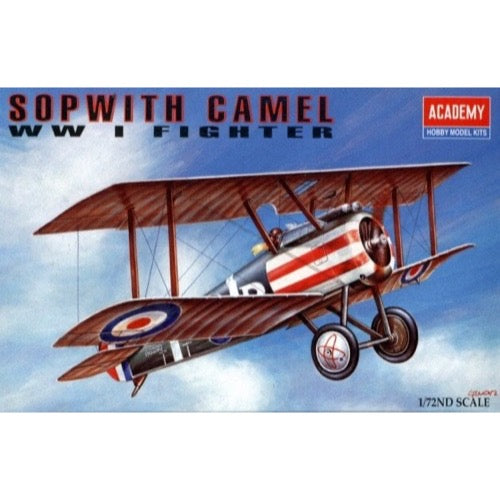
Academy 12447 1/72 Sopwith Camel WWI Fighter
4.00
$
<p>The British Sopwith Camel, a wooden biplane fighter aircraft from World War I. It owes its nickname to the "hump" in front of the pilot's cockpit, which housed machine guns. The Camel was the successor to the successful Sopwith Pup fighter. The first flight of the prototype took place in December 1916, and deliveries to front-line units began in the summer of 1917. The first series batches required great skills from the pilots and showed an asymmetry of flight characteristics unseen in other Allied machines. Over time, however, the Camel gained a reputation among pilots as a very maneuverable, solid machine with a good rate of climb. It was a worthy rival for German machines from the Albatros or Fokker factories. Several versions of the Camel were created during the war. The most important of them are: F.1 - fighter, F.1.3 - night fighter, TF1 - attack aircraft (Trench Fighter), 2F.1 - carrier-based fighter. Thanks to the start of serial production by eight different aircraft manufacturers, it was possible to produce as many as 5,490 machines during the war. Technical data: Maximum speed: 185 km/h; rate of climb 5.5 m/s, maximum ceiling 6,400 m, armament: 2 Vickers machine guns, caliber 7.7 mm, firing through the propeller. In the assault version, Lewis machine guns, caliber 7.7 mm.</p>
<p>This is an injection-plastic jet aircraft model kit.</p>
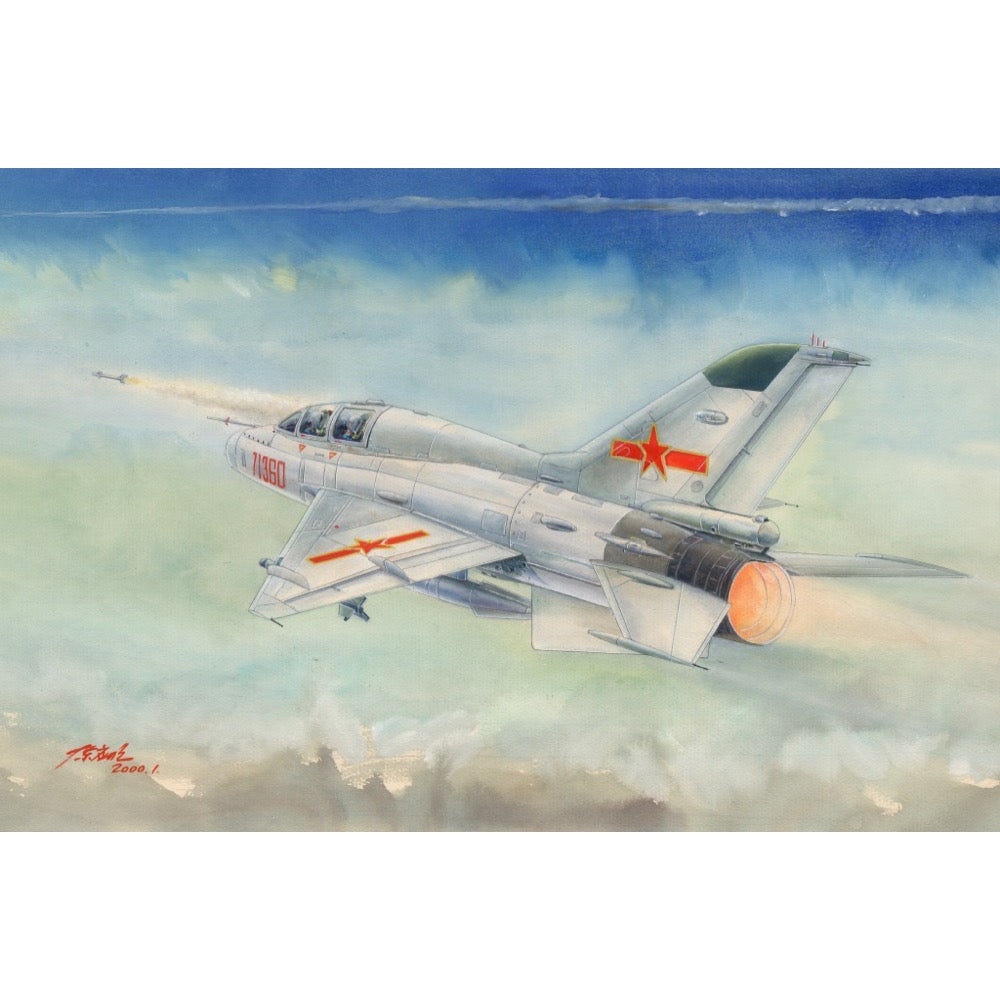
Trumpeter 02824 1/48 JJ-7 Trainer
21.00
$
<p>The JJ-7 is generally based on the J-7B fighter design, with the single-seat cockpit replaced by a tandem two-seat cockpit. The student pilot sits in the front seat and the trainer sits in the rear seat. The original single under-fuselage vertical stabilising fin of the J-7 is replaced by a two-fin design. As a result of the additional seat, the internal fuel tank capacity of the JJ-7 is smaller than that of the J-7B. An additional fuel tank is added on the back of the fuselage between the cockpit canopy and vertical tail. The single rear-hinged cockpit canopy of the J-7 is replaced by two side-hinged (open to right) canopies.</p>
<h3>Features</h3>
<ul>
<li>
<p>The kit consists of over 160 parts</p>
</li>
<li>
<p>Fuselage & wing with finely engraved panel lines</p>
</li>
<li>
<p>Photo Etched parts included</p>
</li>
</ul>
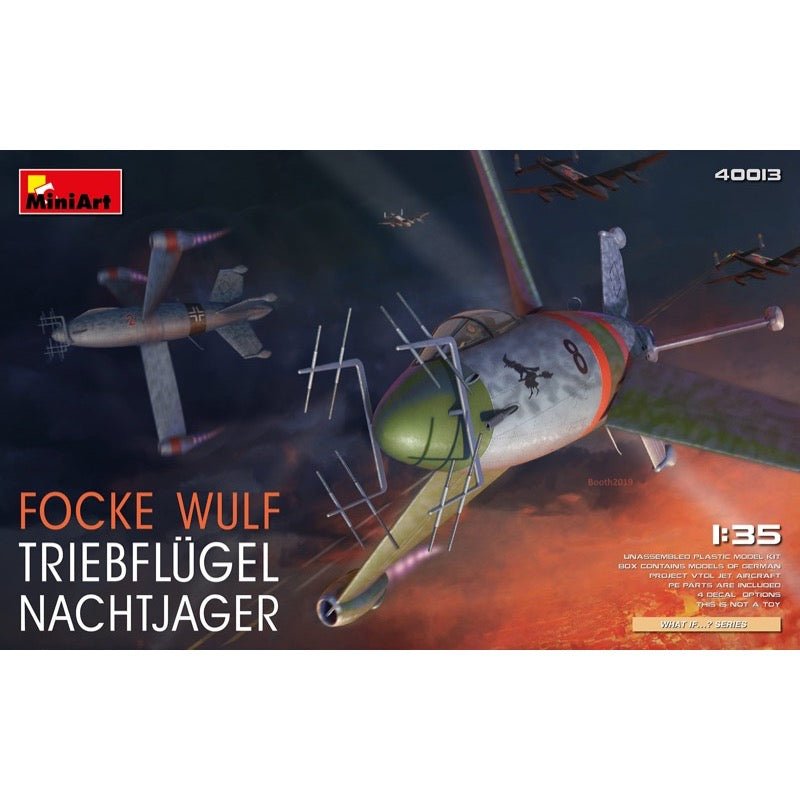
MiniArt 40013 1/35 Fock Wulf Triebflugel Nachtjager
25.00
$
<h3>Features</h3>
<ul>
<li>Highly Detailed Model</li>
<li>Clear Parts Included</li>
<li>Gun Bay Can Be Open Or Closed</li>
<li>Photo-Etched Parts Included</li>
<li>Decals Sheer For 4 Variants</li>
</ul>
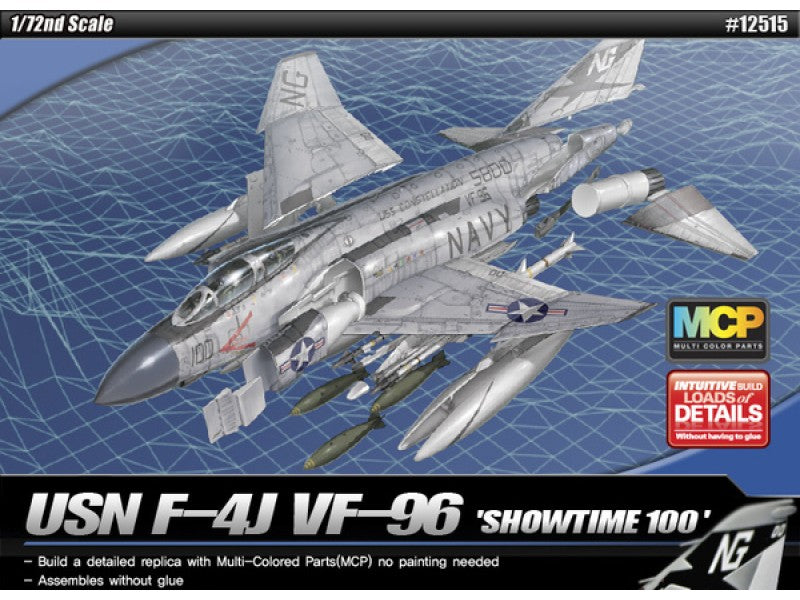
Academy 12515 1/72 F-4J Phantom II MCP
27.00
$
<p>The McDonnell Douglas F-4 Phantom II is a tandem two-seat, twin-engine, all-weather, long-range supersonic jet interceptor and fighter-bomber originally developed by McDonnell Aircraft for the United States Navy. Proving highly adaptable, it first entered service with the Navy in 1961 before it was adopted by the United States Marine Corps and the United States Air Force. By the mid-1960s, it had become a significant part of their air arms. Phantom production ran from 1958 to 1981 with 5,195 aircraft built, making it the most produced American supersonic military aircraft in history and cementing its position as an iconic combat aircraft of the Cold War.</p>
<p>This is an injection-plastic jet aircraft model kit.</p>
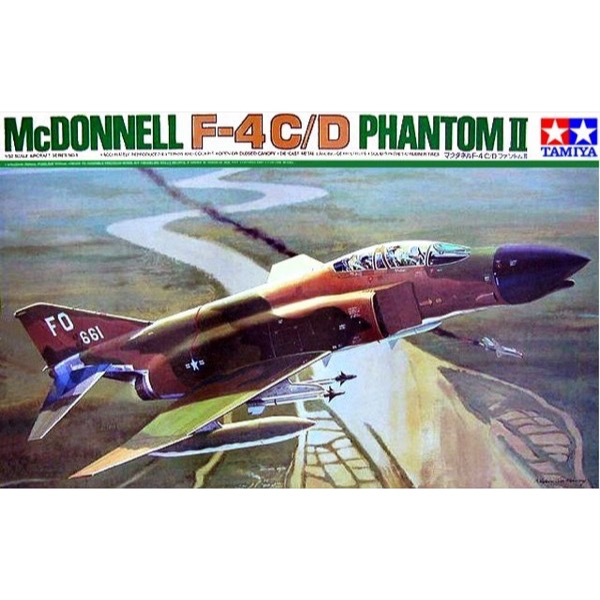
Tamiya 60305 1/32 McDonnell Douglas F-4C/D Phantom II
73.00
$
<p>The F-4 Phantom II was originally conceived as a carrier-borne fighter for the U.S. Navy in the late-1950s but was eventually also adapted by the U.S. Air Force and Marines in addition to the air forces of many other countries. This model kit can depict the first variant used by the U.S. Air Force, the F-4C, as well the subsequently upgraded F-4D.</p>
<h3>Features</h3>
<ul>
<li>The kit features a one-piece fuselage for easy assembly and die-cast metal landing gear legs to ensure a stable stance after the kit is finished.</li>
<li>The canopy and airbrake may be assembled in either open or closed positions.</li>
<li>A wide range of ordnance, two crew figures, and three marking options are also included.</li>
</ul>


